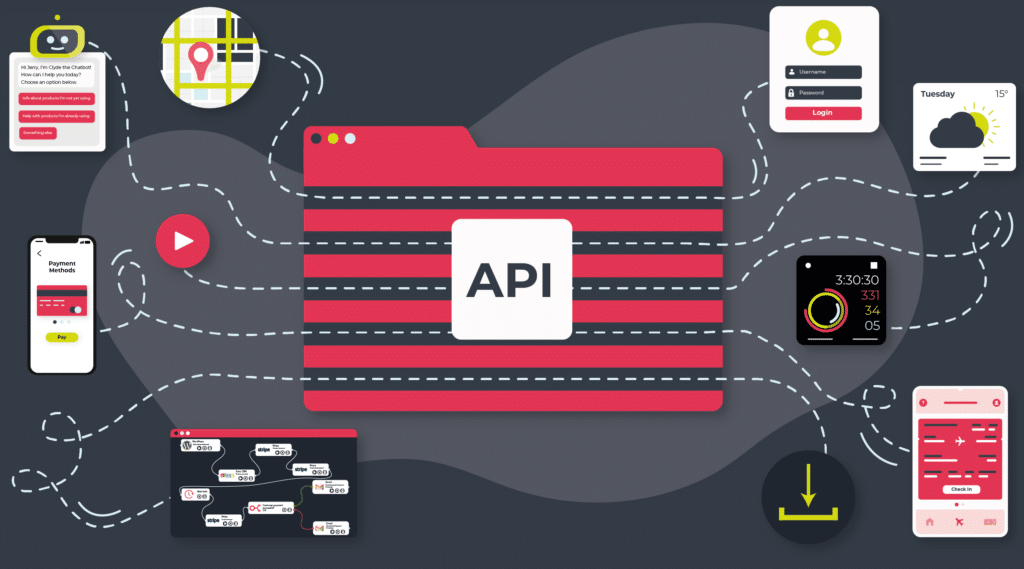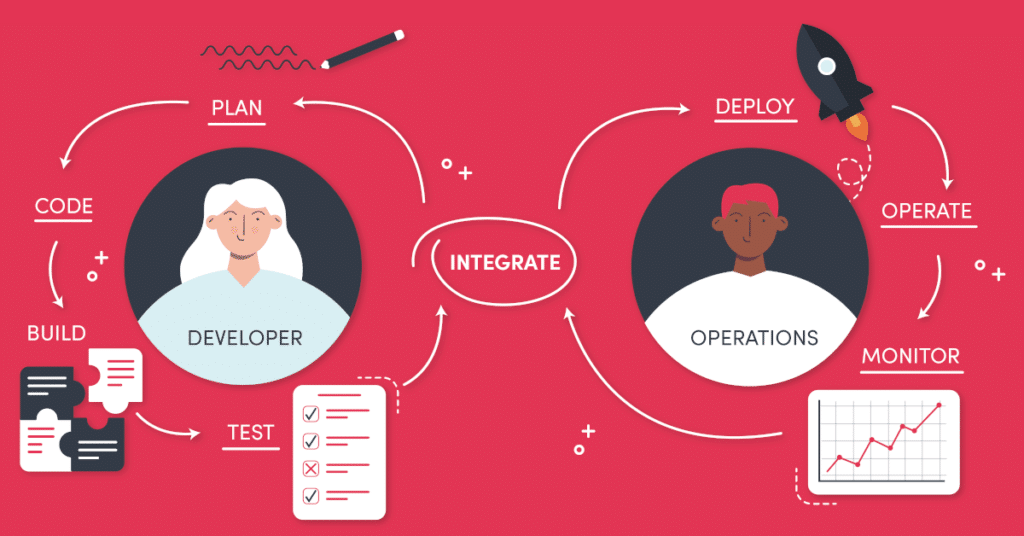
Updated on by Hayley Brown
Collaborative innovation is defined as bringing a range of people together. They share diverse ideas, knowledge, skills, experience and resources to innovate and solve problems.
Innovation through collaboration can deliver real value to an organisation. Reypens notes “in value co-creation processes, value is co-created when stakeholders interact and contribute resources to jointly resolve agreed issues.”
There are many steps and processes to implement and follow in order to build a culture of innovation through collaboration. From dealing with innovation partners and stakeholders to understanding the conditions of continuous innovation.
We take a look at many of the aspects that organisations need to understand and implement to achieve innovation through collaboration.
Dealing with Innovation Partners, Network Organisations and Co-Creation
To be innovative you need your internal and external stakeholders to be on the same page. As well as knowing how to deal with them to benefit from innovative ideas and value co-creation.
The collaborative innovation process will be successful with external stakeholders if organisations recognise the importance of internal collaboration with existing employees. Therefore at the centre of the initial innovative process is communication. Through communication objectives and goals are shared about what the organisation wants to achieve. Then expanding this approach to partners or other external stakeholders.
Internal Stakeholder Collaboration
Firstly, it is important to recognise the value of internal collaboration with your internal stakeholders. Doing this will help engage and motivate employees. At the same time making them better equipped to relate and respond to future innovation from partners and other stakeholders.
Preparing your internal stakeholders for innovation through collaboration can help you prepare for collaboration with external stakeholders. One way to prepare is to create a platform that encourages employees to share their experiences. As well as how their interactions can be improved. Afterwards, expand this and start asking internal stakeholders to generate ideas to solve shared problems.
By including internal stakeholders in the innovation process they can see how their involvement has had an impact on the decision-making process. As well as making a difference to customers.
It is noted that “stakeholders are becoming increasingly empowered, interconnected and willing to share their knowledge and ideas with companies.”
External Stakeholder Collaboration
Secondly, it is important to build collaborative working practices with your external stakeholders these could be network organisations and co-creators.
When selecting appropriate external stakeholders for collaborative innovation it is important to identify those who are not competitors. Rather those who have common goals and objectives with your organisation. As well as share similar values such as trust and clarity up-front. External stakeholders must have the relevant resources and expertise to help collaborate effectively. As well as a collaborative mindset and leadership commitment.
When building collaborative environments and relationships it is important to recognise why stakeholders are contributing their time and resources. To build teams it is important to implement processes that enable participants to easily engage with others, internal or externally. As well as allow them to benefit from the rewards that are motivating them to contribute their time and energy.
Successful organisations are recognised as willing to experiment. They understand the value of learning throughout the process even if the outcome isn’t completely desired commercially or financially. They are however willing to evaluate and iterate on the innovative process.
Approach to Collaborative Innovation
Defining your innovation through a collaborative approach is important. Dibley, Yenicioglu and Clark note in their report, that organisations should “develop open, flexible and dynamic business models with a structure and governance that encourages collaboration, teamwork and co-creation with internal and external stakeholders.”
As well as be subject to continuous collaborative innovation in the same ways an organisation’s product or service should be.
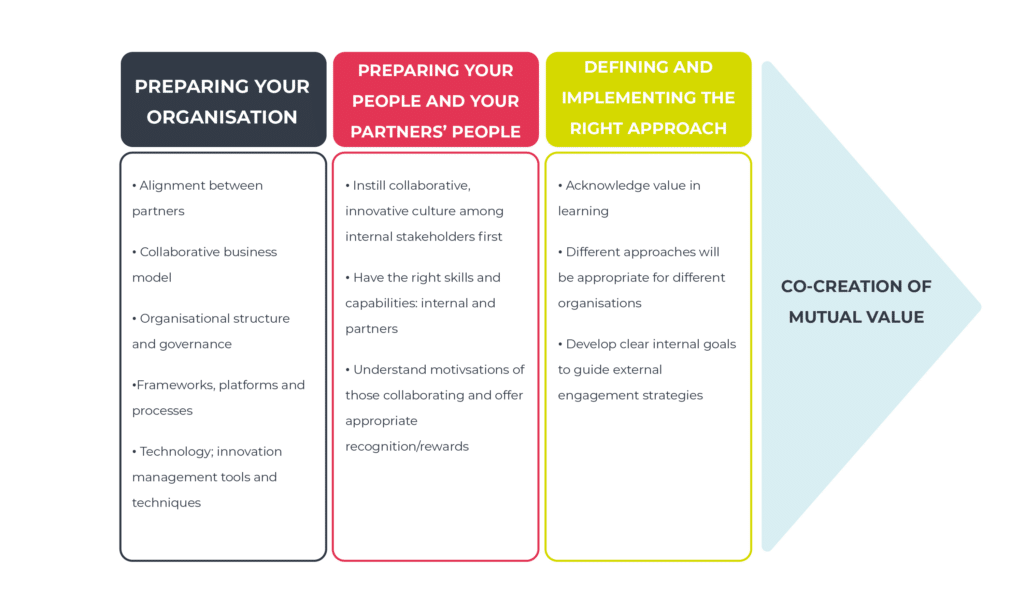
Source: How Collaborative Innovation and Co-Creation Can Deliver Value: A stakeholder Approach
Innovation through Collaboration Benefits
You’ve prepped your internal team, built collaborative processes with both them and your external stakeholders and defined your approach. So, what are the benefits you’ll be reaping from your new innovative and collaborative culture?
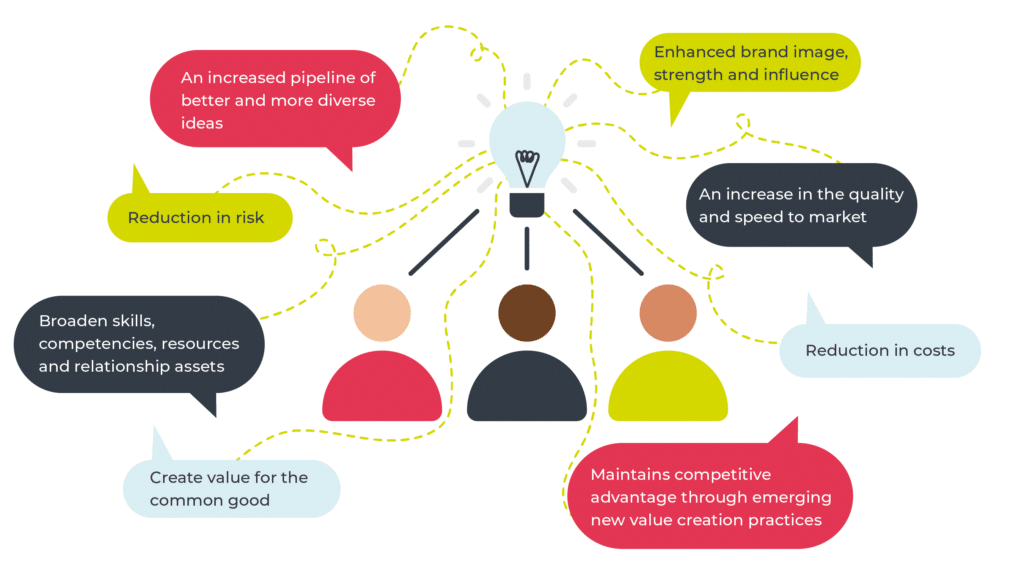
Finding the Fittest Architecture
A system is built on infrastructure, such as an IaaS, PaaS and SaaS all have a particular architecture.
Architecture typically describes the design of the components and their relationship within a system. As this example from Red Hat explains. “In order for a microservices architecture to work as a functional cloud application, services must constantly request data from each other through messaging. Building a service mesh layer into an application simplifies interservice communication, but a microservices architecture may also need to integrate with your legacy applications and other data sources.”
Finding and using the right architecture can align business processes, applications and APIs. This can then help your innovation processes.
Choosing Applications: Off-the-shelf, tailor-made, open-source, what platform, cloud?
The applications and platforms you choose should be complimentary to not only the infrastructure you work with but the innovative practices you wish to implement.
For instance, out-of-the-box software also known as off-the-shelf is pre-packaged software. Off-the-shelf types of software handle standard processes for a specific type of company. The software’s native features and built-in functionality are directly from the vendor. The software works immediately when used. Using off-the-shelf software is beneficial as they are faster to deploy which helps save time and development resources. As well as being a budget-friendly option there are continuous updates and support to the application.
Out of the box, applications can be useful in regards to collaboratively innovation efforts as users don’t tend to require high technical knowledge and can be used by any stakeholder.
On the other hand, custom software or tailor-made applications are original pieces of software developed to meet distinct customer needs. With customisation, additional functionality can be added and processes can be streamlined. Using custom software means it is tailored to the organisation’s needs, this does come with a longer development time but the benefit of long-term cost efficiency.
With tailored software for innovation through collaboration, you can have all the necessary components at your fingertips. The application can also scale as the organisation does.
Conditions for Continuous Innovation
There are numerous key considerations to undertake for innovation through collaboration. For instance, aligning your organisation’s existing processes and practices. As well as sharing the organisation’s vision and values related to the goal of collaborative innovation. Finally, encourage an atmosphere of commitment and trust between collaborating partners.
When designing and building a good innovation strategy it is worth incorporating your conditions for continuous innovation. Accept Mission has designed an innovation strategy following five key steps, discovery, development, building plans, launch and execution.
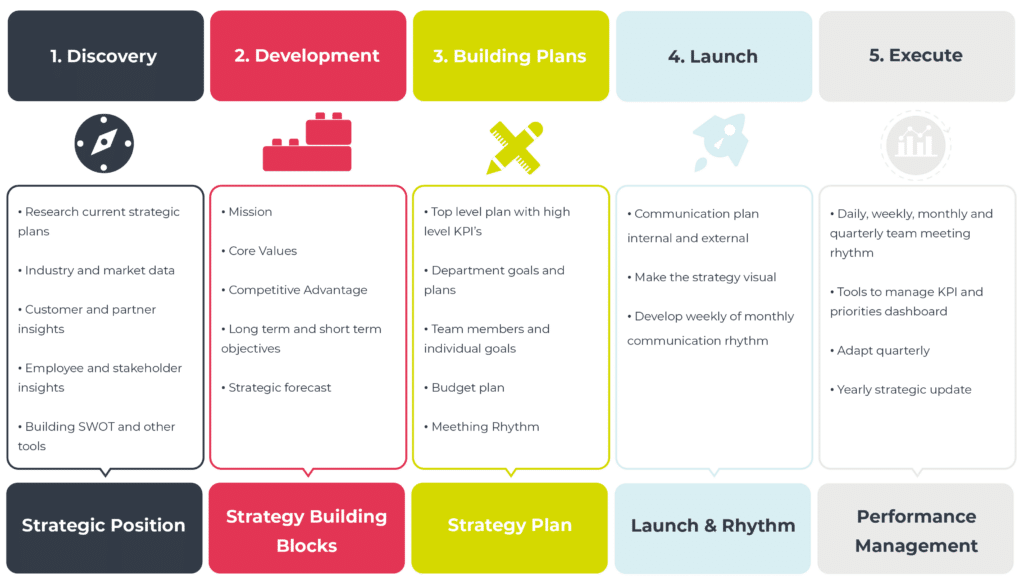
Source: Best examples of applicable innovation strategy in business
Why is innovation through collaboration important and what’s driving it?
An innovative and collaborative culture within organisations is becoming increasingly the norm due to fast-changing marketing and increasing global competition. Organisations realise there is a need for more frequent innovative processes and that they are higher in quality.
Recent history has taught businesses that they need to become much more adaptable to disruption. Whether this is done through the technology they use to get ahead in the API economy. Or embracing new ways of working, such as collaborative and continuous innovation.
Frigo notes, “digitization, ubiquitous connectivity, networking, globalisation, sustainability, inclusive growth, and the recognition from the recent financial and economic crisis that more transparency, communication, interaction and engagement are necessary in the system.”
These new pressures are driving organisations to open approaches and open business models. One example describes how using an open business model can address the rise in development costs. As product life cycles become shorter companies are finding it harder to justify their innovation investment.
They continue and explain, “Open business models address both effects. It attacks the cost side of the problem by leveraging external research-and-development resources to save time and money in the innovation process Open business models also attack the revenue side.”
An example of an open business model would be to create brands by licensing technologies from other companies around the world. This helps leverage external research and development resources to save time and money in the innovation process. These approaches result in a higher degree of collaboration and value co-creation.
Collaborative Innovation is the future of business development
Driving Innovation through collaboration is a process that will become increasingly ingrained in the ever-evolving business models of successful firms. When the culture is incorporated into an organisation’s business strategy it can help progress alongside its digital transformation efforts.
Stephen Brobst from Teradata puts it quite clearly, “innovation and togetherness create ideation, innovation and collaboration”.
